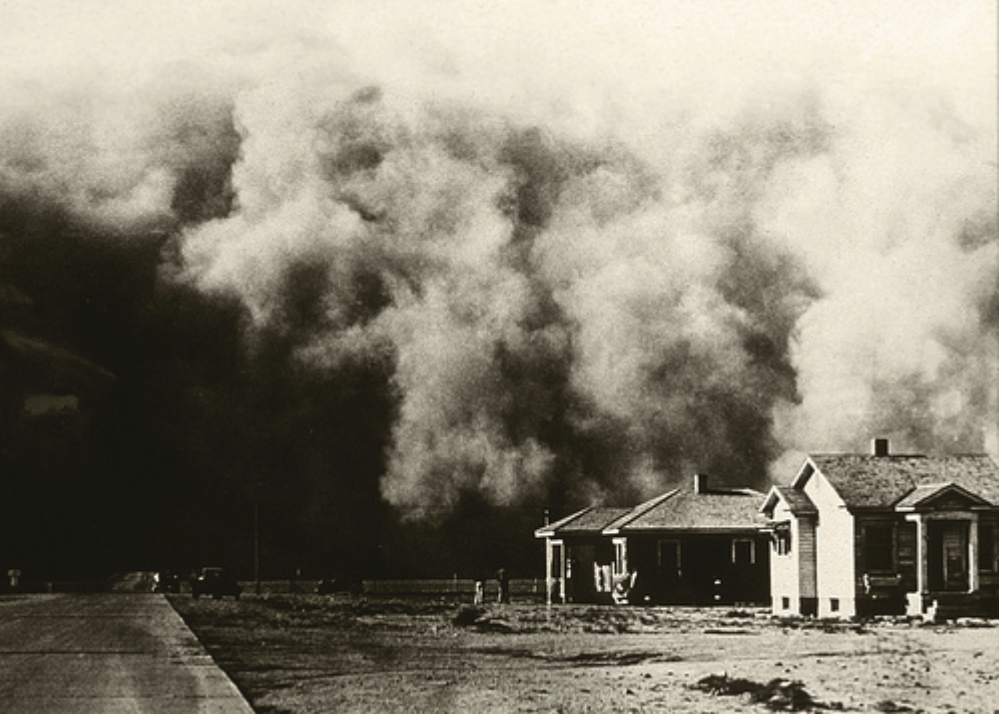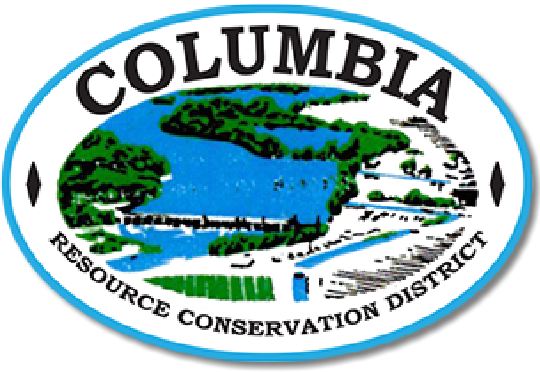History
History of Resource Conservation Districts
In the 1930s, dust storms swept the Great Plains states, and became known as the “Dust Bowl. Millions of acres of cropland were destroyed by drought and the loss of fertile topsoil was devastating, leading President Franklin D. Roosevelt to see a need for soil conservation.

In his 1939 book The Grapes of Wrath, author John Steinbeck described the families escaping the Dust Bowl: “And then the dispossessed were drawn west–from Kansas, Oklahoma, Texas, New Mexico; from Nevada and Arkansas, families, tribes, dusted out, tractor out. Carloads, caravans, homeless and hungry; twenty thousand and fifty thousand and a hundred thousand and two hundred thousand. They streamed over the mountains, hungry and restless–restless as ants, scurrying to find work to do–to lift, to push, to pick, to cut–anything, any burden to bear, for food. The kids are hungry. We have no place to live. Like ants scurrying for work, for food, and most of all for land.” By 1940 2.5 million people left the Plains States, victims of the combined devastation of severe drought and poor soil conservation practices.
On April 27, 1935, Congress passed Public Law 74-46, which recognized that "the wastage of soil and moisture resources on farm, grazing, and forest lands . . . is a menace to the national welfare," and it directed the Secretary of Agriculture to establish the Soil Conservation Service (SCS) as a permanent agency in the U.S. Department of Agriculture (USDA). In 1994, Congress changed SCS’s name to the Natural Resources Conservation Service (NRCS) to better reflect the broadened scope of the agency’s concerns.

The creation of the SCS represented the culmination of the efforts of Hugh Hammond Bennett, known as the “Father of Soil Conservation” and the first Chief of SCS, to bring about public awareness and concern for soil erosion issues. Bennett became aware of the threat posed by the erosion of soils early in his career as a surveyor for the USDA Bureau of Soils. He observed how soil erosion by water and wind reduced the ability of the land to sustain agricultural productivity and to support rural communities who depend on it for their livelihoods. Dryland farming on the Great Plains led to the systematic destruction of the prairie grasses. In the ranching regions, overgrazing also destroyed large areas of grassland. Gradually, the land was laid bare, and significant environmental damage began to occur. Among the natural elements, the strong winds of the region were particularly devastating. Bennett launched a public crusade of writing and speaking about the soil erosion crisis. His highly influential 1928 publication “Soil Erosion: A National Menace” influenced Congress to create the first federal soil erosion experiment stations in 1929.
To increase the ability to respond to specific local needs, states formed “Soil Conservation Districts,” which were controlled by local boards of directors. In California, Soil Conservation Districts began forming in the 1940s, and today there are 103 districts throughout the state. Under Article 9 of the Public Resource Code, Soil Conservation Districts were originally empowered to manage soil and water resources for conservation, but these powers were expanded in the early 1970s to include “related resources,” including water quality and wildlife habitat. This expansion of powers was reflected in the change of name from “Soil” Conservation Districts to “Resource” Conservation Districts in 1971.
For more a more detailed history of the NRCS and soil conservation programs, read “More Than 80 Years Helping People Help the Land: A Brief History of NRCS.”
